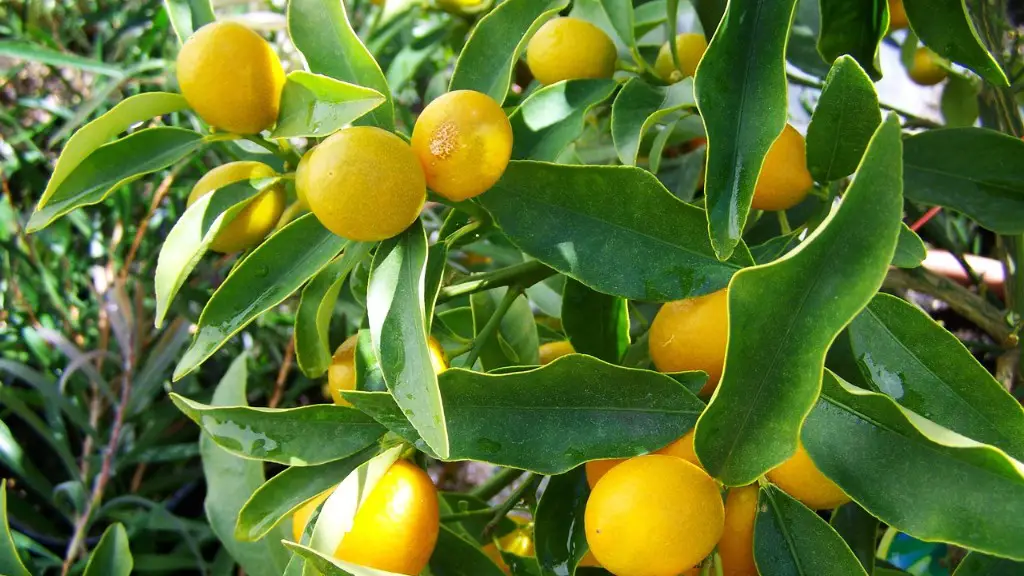Palm Tree Care: Trimming Palm Tree Leaves
Caring for your palm tree doesn’t have to be complicated. With a few simple steps, you can help your palm tree look its best and enjoy the great benefits of having a healthy palm tree in your environment. Trimming palm tree leaves is one of the most important steps you can take when it comes to proper palm tree care.
If you’re a beginner when it comes to palm tree care, you may wonder why it’s important to trim palm tree leaves. Trimming your palm tree’s leaves will remove any unhealthy branches that are no longer growing properly or growing in a dangerous direction. It will also remove any debris from the leaves, such as bugs or dead leaves, which can lead to disease and damage if left untreated. You may even find that trimming your palm tree leaves can lead to better airflow, increasing the health of your tree in the long run.
When it comes to trimming palm tree leaves, the best time to do so is usually in the spring or summer when the leaves are at their fullest. This means that if you trim your palm tree in late summer or early fall, you could miss out on some of the potential benefits. Even if your palm tree isn’t full of leaves yet, it’s still important to trim the unhealthy branches. This will help your tree stay healthy and provide more space for new growth.
If you’re a novice when it comes to trimming trees, don’t worry. There are many resources available to help you get started. There are books, videos, and even websites devoted to helping you learn the basics of palm tree care, including methods for trimming. If you want to start with a more hands-on approach, you can also visit your local nursery for advice from experienced professionals.
When it comes to the actual trimming process, it’s important to take your time and be meticulous. Choose the correct tools for the job – garden shears can be effective for smaller leaves and branches, while a pruning saw is best for larger ones. Make sure to cut away any dead or unhealthy branches first, before moving on to healthy ones. Finally, it’s important to remember that you should never try to trim more than one-third of the leaves on your palm tree at a time. Over-trimming can cause severe stress to the tree, so it’s best to wait at least three months between trimmings.
Overall, trimming palm tree leaves is an important step in proper palm tree care. While it may seem intimidating, with a few simple steps you can ensure your tree looks its best and remains healthy for many years to come.
Additional Steps for Healthy Palm Trees
Proper trimming is only part of the palm tree care equation. In addition to trimming the leaves of your palm tree, there are several other steps you can take to ensure your tree remains healthy.
One of the most important steps you can take is to protect your tree from excessive sun exposure. Palm trees naturally prefer indirect sunlight, but they can be affected by too much of it, leading to yellowing, browning, and wilting of their leaves. Be sure to choose the right location for your palm tree, and if necessary, you can use tools like shade sails or trees to block out some of the direct sunlight.
Another step you can take is to make sure the soil is rich in nutrients. Adding organic matter, such as compost or mulch, to your soil can help it to retain moisture, as well as provide your trees with the nourishment they need to thrive. During the summer months, you may need to water your palm tree more often than other trees, as the roots may dry out quickly in the heat.
Finally, it’s important to keep an eye out for any signs of disease or insect infestations. Signs of disease can include discolored leaves, wilting, or black spots. If you notice any of these signs, be sure to contact a certified arborist to assess the situation and determine the best course of action.
Other Uses for Pruned Palm Tree Leaves
Trimming your palm tree doesn’t have to be a waste of time and resources. There are actually several creative and practical uses for pruned palm tree leaves.
One of the most popular uses is to create decorative wreaths or mats out of the palm fronds. Palm fronds are known for their unique shape and color, which makes them perfect for crafting unique and eye-catching decorations. Crafting these decorations is a fun and relaxing activity that can be done with friends or family.
If you’re looking for a more practical use for your palm fronds, you can also use them for mulching and composting. Palm fronds are a great addition to your compost pile, providing your soil with much-needed nitrogen and helping to improve the texture of your soil. They can also be effective at preventing erosion, trapping moisture and moderating soil temperatures.
Palm fronds can even be used for organic pest control. Dried fronds can be spread around your garden or near the base of your trees to help deter pests such as slugs and snails. You can also place freshly cut palm fronds near fruit trees, as they’ll encourage beneficial insects such as wasps to take up residence, further protecting your garden from unwanted pests.
Precautions When Trimming Palm Trees
As with any gardening or landscaping activity, there are some precautionary measures that should be taken when you are trimming palm trees.
First and foremost, it’s important to make sure you are properly protected from any dangers associated with trimming. This means wearing protective gloves and eyewear, as well as having someone around to help in case of an emergency.
It’s also important to make sure that you’re using the proper tools for the job. Pruning shears are best for smaller branches and leaves, while a saw is better for larger branches. It’s also a good idea to research which species of palm tree you have, as this will help you determine which tools are best for the job.
Finally, it’s important to take caution when disposing of the palm fronds you have trimmed. Palm fronds can contain harmful bacteria or fungus, so make sure to dispose of them in a manner that won’t spread contamination.
Weather Conditions
When trimming your palm tree, it’s important to keep in mind the weather conditions in your area. It’s best to trim palm trees when the weather is mild and there’s no chance of inclement weather. This will help to ensure that the trimming job is done correctly and that the tree is not damaged as a result. Additionally, you’ll want to wait until after a period of rain, as the ground will be particularly soft and will make the process of cutting and disposing of the fronds much easier.
It’s also important to remember that you should never trim your palm tree in the winter months. Trimming a palm tree during this time can damage the tree, as the sap is particularly delicate and can be easily disturbed by pruning in cold temperatures.
Finally, if you’re planning to trim your palm tree while it’s in bloom, you should be sure to wait until after the flowering period. This will help to ensure that any fronds that have been trimmed away don’t interfere with the flowering process, as trimming too early can lead to damage and missed blooms.
Health Benefits of Having a Palm Tree
In addition to the aesthetic value of having a palm tree, there are several health benefits associated with caring for one. Caring for a palm tree can help to reduce stress, as being around them can be a calming and grounding experience. Additionally, caring for a palm tree can help to boost your mood and provide motivation to keep your other plants healthy.
Palm trees can also help to improve air quality, which is beneficial for those who suffer from allergies and asthma. By removing excess carbon dioxide from the air, palm trees can help to reduce air pollution and promote healthier air quality. Furthermore, palm trees can increase the amount of oxygen in the air and can be used to increase the humidity in a room or area.
Overall, palm trees can provide both physical and mental health benefits. By taking the time to care for them properly, you can enjoy the beauty of your palm tree for years to come.
Conclusion
Trimming palm tree leaves isn’t difficult and can lead to a variety of benefits for your tree. With the right tools and knowledge, you can trim your palm tree leaves and enjoy its beauty for years to come. Just be sure to take precautions when trimming, such as wearing protective gear and choosing the correct tools for the job. Additionally, consider the other steps you can take for proper palm tree care, such as protecting your tree from excessive sun exposure and adding organic matter to the soil. By following these steps, you can ensure your palm tree is healthy and thriving.




